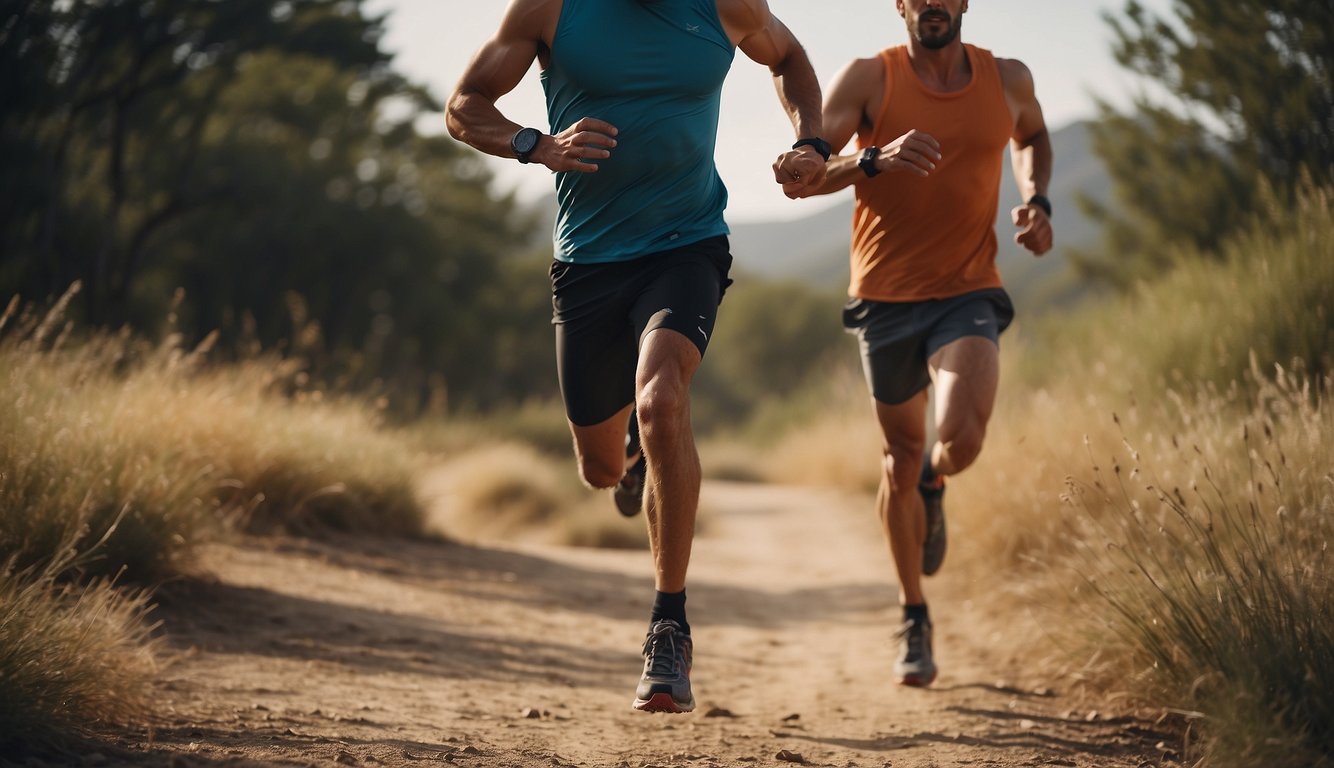When it comes to running, there are many different types of terrain to choose from. Two of the most popular types of running are trail running and road running. While both are great forms of exercise, they have different impacts on the body. In this article, I will be comparing trail and road running body impacts to help you decide which type of running is right for you.

Road running is typically done on a flat, even surface such as a sidewalk or pavement. This type of running is great for building endurance and improving cardiovascular health. However, road running can also be hard on the body, especially on the joints. The repetitive motion of running on a hard surface can cause impact injuries such as shin splints, stress fractures, and knee pain.
Trail running, on the other hand, is done on uneven terrain such as hills, rocks, and dirt paths. This type of running engages more muscles in the body and can help improve balance and agility. Trail running is also easier on the joints because the terrain absorbs some of the impact of each step. However, trail running can also be more challenging and requires more focus and attention to avoid tripping or twisting an ankle.
Physiological and Biomechanical Differences
When it comes to trail and road running, there are several physiological and biomechanical differences that runners need to be aware of. In this section, I will discuss the differences in muscle engagement and joint stress, running surface and stride adaptations, as well as injury risks and prevention strategies.
Muscle Engagement and Joint Stress
One of the main differences between trail and road running is the type of muscle engagement and joint stress that occurs. Trail running requires more engagement of stabilizer muscles due to the uneven terrain, which can help improve overall stability and balance. On the other hand, road running typically involves more repetitive motion, which can lead to increased stress on joints such as the knees and hips.
Running Surface and Stride Adaptations
Another key difference between trail and road running is the running surface and stride adaptations required. Trail running involves running on uneven terrain such as dirt, rocks, and roots, which can require more balance and stability. This can lead to a shorter stride length and a higher cadence. In contrast, road running typically involves a longer stride length and a lower cadence due to the smoother surface.
Injury Risks and Prevention Strategies
In terms of injury risks, trail running can increase the risk of ankle sprains, while road running can increase the risk of knee injuries. To prevent injuries, it is important to incorporate strength training exercises that target the core, quads, hamstrings, glutes, and calves. Additionally, practicing proper running form can help reduce biomechanical load on the body and improve shock absorption.
In conclusion, understanding the physiological and biomechanical differences between trail and road running can help runners make informed decisions about their training and injury prevention strategies. By incorporating strength training and proper running form, runners can reduce their risk of injury and improve their overall performance.
Training and Performance Considerations
Adapting Workouts for Trail vs. Road
When it comes to training for trail running versus road running, there are some key differences to keep in mind. One of the biggest differences is the terrain. Trail running typically involves more uphill and downhill sections, as well as more side-to-side movement. This means that trail runners need to focus on building strength and agility in addition to endurance.
To adapt your workouts for trail running, consider incorporating strength training exercises that target your stabilizer muscles and improve your balance. You can also focus on exercises that engage your Achilles tendon and improve your reaction time. Additionally, practicing mindfulness and mental focus can help you stay engaged and alert on the trail.
Gear and Footwear Selection
Another important consideration for trail running is gear and footwear selection. Trail running shoes typically have more traction and durability than road running shoes, and may also have lugs or other features that improve grip on softer surfaces. It’s important to choose shoes that fit well and provide the right amount of support for your feet and ankles.
When it comes to other gear, trail runners may want to consider carrying a hydration pack or other supplies for longer runs. Additionally, trail runners may want to invest in gear that helps protect against falls and lower limb muscle damage, such as knee pads or compression sleeves.
Mental and Physical Health Benefits
Finally, it’s important to consider the mental and physical health benefits of trail running versus road running. Trail running can provide a sense of adventure and exploration, as well as stunning views and a connection to nature. Additionally, running on natural surfaces can provide a different physiological demand than running on pavement, and may improve metronomic efficiency and stride length.
Overall, trail running can be a great way to build a stronger body and mind, while also enjoying the outdoors and exploring new trails. By adapting your workouts, choosing the right gear, and focusing on mental and physical health, you can become a successful trail runner and enjoy all the benefits that come with it.

